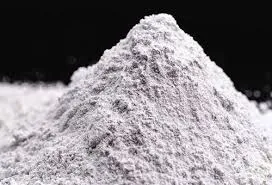
дек. . 03, 2024 14:42 Back to list
Generating HPMC Dispersion for Enhanced Performance in Various Applications
HPMC Dispersion An Insight into its Properties and Applications
Hydroxypropyl Methylcellulose (HPMC) is a semi-synthetic polymer derived from cellulose, widely utilized in various industries due to its unique properties. One of the most significant forms of HPMC is its dispersion, which has gained popularity in pharmaceuticals, food, cosmetics, and construction sectors. This article delves into the characteristics, preparation, and applications of HPMC dispersion, highlighting its versatility and importance in modern formulations.
Understanding HPMC
HPMC is created through the modification of cellulose fibers by the addition of hydroxypropyl and methyl groups. This transformation not only enhances its solubility in water but also imparts unique rheological properties, making it an excellent thickening agent and emulsifier. HPMC is non-ionic, which means it does not react with other charged substances, making it an ideal choice in sensitive formulations.
Properties of HPMC Dispersion
HPMC dispersions exhibit several distinct properties
1. Thickening Ability HPMC can significantly increase the viscosity of solutions, thereby acting as a thickener in various applications. This characteristic is particularly crucial in products such as paints, where a stable and uniform texture is essential.
2. Water Retention HPMC dispersions possess excellent water retention capabilities, making them valuable in the formulation of mortars and glues. This property ensures that the product maintains its workability over time, enhancing its performance.
3. Emulsifying Properties The ability of HPMC to stabilize emulsions makes it a favored choice in cosmetic formulations, preventing the separation of oil and water phases and ensuring a smooth and consistent product.
4. Film-Forming Ability HPMC can form continuous films upon drying, which adds to its utility in applications ranging from coatings to drug delivery systems.
5. Biocompatibility In pharmaceuticals, HPMC is often chosen due to its biocompatibility and non-toxic nature, making it suitable for drug formulations and controlled release systems.
Preparation of HPMC Dispersion
hpmc dispersion

Creating an HPMC dispersion involves dissolving HPMC in water or other solvents to form a homogeneous mixture. The dissolution process typically requires moderate heat and agitation, as HPMC tends to swell before fully dispersing. Several factors influence the efficiency of the dispersion, including
- Concentration The amount of HPMC used directly affects the viscosity and overall properties of the dispersion. - Temperature Heat boosts the dissolution rate and ensures a smoother dispersion. However, excessive temperatures may degrade HPMC.
- pH The pH of the dispersion can alter its viscosity and stability, affecting its suitability for particular applications.
Applications of HPMC Dispersion
The versatility of HPMC dispersion allows it to be employed in numerous fields
1. Pharmaceuticals HPMC is extensively used in the formulation of tablets, as it aids in binding and directly influences the release profile of the active ingredients. Furthermore, its film-forming properties make it ideal for enteric coatings.
2. Food Industry In food applications, HPMC serves as a thickening agent, stabilizer, and emulsifier. It is often found in sauces, dressings, and gluten-free products, enhancing texture and mouthfeel.
3. Cosmetics HPMC dispersions are utilized in creams, lotions, and other personal care products for their ability to stabilize emulsions and enhance product consistency.
4. Construction In construction materials such as adhesives and mortars, HPMC improves workability, water retention, and adhesion, leading to better performance and durability.
5. Agriculture HPMC dispersions are used in agricultural formulations as stabilizers for fertilizers and pesticides, improving distribution and efficacy.
Conclusion
HPMC dispersions have become integral in various industries thanks to their remarkable properties and versatility. As research continues to explore the potential applications of HPMC, its significance will only grow, enhancing product quality and performance across multiple sectors. Understanding the characteristics and benefits of HPMC dispersions is crucial for manufacturers aiming to innovate and improve their formulations, ensuring they meet the demands of modern consumers and regulatory standards.
-
Unlocking the Benefits of HPMC Products: A Gateway to Versatile Applications
NewsAug.07,2025
-
Unleashing the Potential of HPMC Ashland: A Comprehensive Look
NewsAug.07,2025
-
Tile Bonding Cellulose: The Key to Superior Adhesion and Durability
NewsAug.07,2025
-
Hydroxypropyl Methylcellulose Powder: The Versatile Component in Modern Pharmaceuticals
NewsAug.07,2025
-
Hydroxyethyl Cellulose: The Versatile Solution for Various Industries
NewsAug.07,2025
-
Hydroxyethyl Cellulose (HEC): The Versatile Polymer for Various Applications
NewsAug.07,2025







